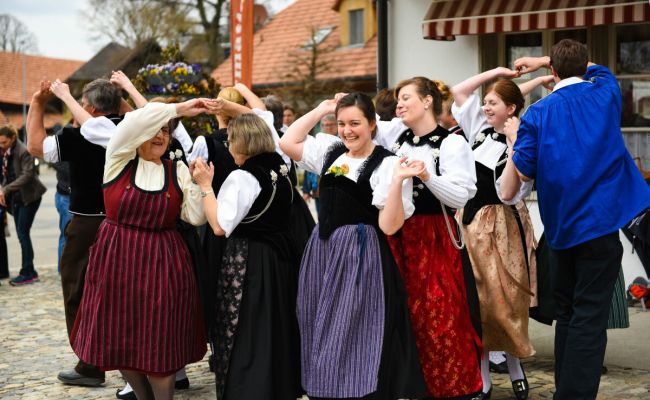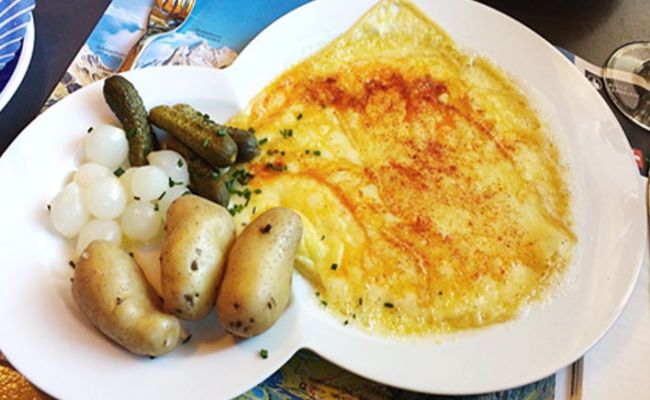Switzerland, located in the heart of Europe, captivates visitors with its
beautiful alpine scenery, crystal-clear lakes, and lovely villages.
Renowned for its neutrality and political stability, this small but
powerful country features a complex cultural tapestry woven by its
German, French, Italian, and Romansh-speaking regions.
Culture in Ancient and Old Switzerland
Despite its tiny size and relative isolation from more well-
known cultural centers, Switzerland has produced a
the remarkable roster of artists and scientists. Switzerland, for
example has won more Nobel Prizes and registered more
patents per capita than any other country, and the
the country is replete with cultural organizations, museums,
and libraries, all of which receive generous federal
funding. However, due to limited chances at home, some
of Switzerland’s most creative minds, such as architect Le
Corbusier and painter Paul Klee sought employment
elsewhere. Switzerland, on the other hand, has long been a
a magnet for creative individuals during times of turbulence
or war in Europe, thanks to its longstanding neutrality and
political asylum laws
Switzerland’s role as Helvetia Mediatrix reflects its geographical location in Europe. The
spirit of Henri Dunant, the founder of the International
The committee of the Red Cross carries on in a continuous
sense of a particular mission of cultural union shared by
many Swiss, as seen by the country’s significant foreign-
aid programs for developing nations. Since the 1990s, with
the end of the Cold War and the collapse of the world’s
bipolar divide, Switzerland has had to rethink and redefine
its historic role. Switzerland can no longer serve as a
a bridge between large power blocs; instead, institutions like
the United Nations and the European Union, of which
Switzerland was not a member until 2002, frequently
incorporate international peace initiatives.
If we define a Swiss culture beyond the arts, we must
acknowledge the distinct French, Italian, and German
cultural circles, along with the Rhaeto-Romanic culture.
The growing influence of the German language on the
Romansh parts of eastern Switzerland, primarily through
television poses a threat to this culture. Federalism, direct
democracy, individualism, and a desire to remain
independent from neighboring major, frequently centralist
countries unite and define the Swiss.
Some critics view the media’s influence as a threat to
Swiss culture and tradition, citing its homogenizing effects
and the potential for television and radio to influence
different language groups in their respective cultural
heartlands of Germany, France, and Italy. These critics
emphasize the significance of the national radio and
television corporation in preserving and cultivating a
the common understanding among all Swiss.
Switzerland people
To live as a coherent entity and protect the neutrality that has served
For their safety, the various elements of the Swiss people have had to
learn cooperation.
Economic and political needs have heavily influenced their outlook,
fostering a practical, cautious, and prudent approach to accepting
innovation and utilizing their resources creatively.
Proper training and efficient exploitation of Switzerland’s human
resources have transformed what was once primarily a mountainous,
rural, and landlocked country with limited natural resources into one of
the world’s most diverse and vital industrial and commercial countries.

Ethnicity and regional diversity of Switzerland people
Despite its modest size, Switzerland has diverse ethnicities
and regions. The majority of the population consists of Swiss Germans,
who live mostly in the country’s central and eastern areas and speak
Swiss German dialects. Swiss Germans account for around 65-70% of
the overall population and significantly affect Swiss culture and
politics.
Swiss French speakers primarily reside in the western part of the
country, specifically in the cantons of Geneva, Vaud, and Neuchâtel,
making up 20–25% of the total population. They contribute a distinct
cultural flavor to Switzerland, speaking French as their primary
language. Approximately 8–10% of the Swiss population is Italian-
speaking, primarily concentrated in the southern canton of Ticino and
some portions of Graubünden, contributing another linguistic and
cultural dimension. Romansh speakers, primarily in the southeastern
canton of Graubünden, are a tiny but substantial minority who
contribute to Switzerland’s linguistic diversity.
Furthermore, Switzerland has a diverse population of immigrants from
all over the world, which contributes to the country’s cultural mosaic.
This mix of languages, traditions, and identities highlights Switzerland’s
distinct position as a multicultural and multilingual nation in the heart
of Europe.
Switzerland Language
Switzerland’s four national languages are German, French, Italian, and
Romansh. The Federal Administration of the Swiss Confederation uses
German, French, and Italian as official languages at the national level,
and Romansh when interacting with its speakers. Occasionally, the
Confoederatio Helvetica employs Latin in official settings, primarily to
represent the country.
In 2020, 62.3% of Switzerland's population spoke native German (either
Swiss or Standard German) at home; 22.8% spoke French (mainly Swiss
French, but including some Franco-Provençal dialects); 8% spoke Italian
(primarily Swiss Italian, but including Lombard); and 0.5% spoke
Romansh. The German region (Deutschschweiz) is generally east, north,
and central; the French half (La Romandie) is west; and the Italian
region (Svizzera Italiana) is south. In eastern Grisons, there is still a tiny
Romansh-speaking native community. The cantons of Freiburg, Bern,
and Valais are officially bilingual, whereas Grisons is officially trilingual.
Religion in Switzerland
Christianity remains the major religion in Switzerland, accounting for
61.2% of the population aged fifteen and up in 2020. This figure
includes 33.8% Catholics, 21.8% Swiss Protestants, and 5.6% other
Christian denominations.
Since 1980, the share of Christians has dramatically decreased from
94% to its current level, while the unaffiliated population has expanded
from 4% to 31%, and those practicing non-Christian religions have
climbed from 1% to 7%. Historically, Gaulish and Germanic forebears
adopted Christianity during late Roman and Frankish dominance,
replacing indigenous Gallo-Roman and Germanic paganisms. The
The Protestant Reformation of the 16th century constituted a watershed
moment, propelling Switzerland to the forefront of Calvinism.
Conflicts between Protestants and Catholics remained until the
nineteenth century, culminating in the Sonderbund War of 1847.
Switzerland lacks a state religion, yet most cantons acknowledge official
churches (Landeskirchen), encompassing Catholic, Swiss Protestant, Old
Catholic, and Jewish congregations, funded by their members’ taxes.
Cuisine Of Switzerland
Switzerland’s fast modernization mirrors changes in its lifestyle and
cuisine, but some political and institutional quirks remain. Swiss cuisine
has always been characterized by significant cultural and regional
differences. Cheese dishes are typical of the Alpine region. Fondue
neuchâteloise (a mixture of melted Emmentaler and Gruyère cheeses
and wine into which bread cubes are dipped) and raclette (cheese
melted over a fire and scraped over potatoes or bread) are famous not
Not only in Switzerland but also around the world.

The Swiss chocolate business, which sprang from the necessity to use
the plentiful milk produced in the pre-Alpine dairying regions, is world–
renowned. Leckerli, or spiced and glazed honey cakes, are also popular.
The preferred cuisine in German Switzerland is Rösti (fried shredded
potatoes), but sausages and sauerkraut are also popular.
Other popular dishes include Zürcher Eintopf or Zürich-style beef stew,
and Zander (pike perch), a delicate fish found in the lakes of eastern
Switzerland. Specialty and seasonal meals, such as Sankt Gallen's
Autumn bratwurst, sets one region apart from another, as does the
country’s plentiful wines and beers (which now include Maisgold, or
corn beer).
